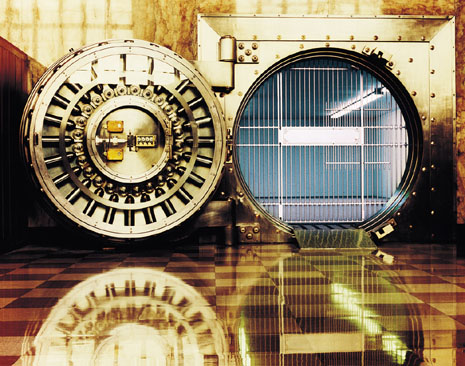Banking, finance, and taxes
Bank Stress Tests Countdown Begins, Dividends and Buyback Approvals Await
Published:
Last Updated:
We are now within ten days of the release of the Federal Reserve’s new round of stress tests on how the nation’s largest banks will do if (or when) the economy goes back into a downturn. The good news is that most banks are expected to pass the tests. Of the questionable ones, they are still not expected to face any added regulatory pressure.
There is a good-news bad-news argument here. Dow Jones showed a decision by the Federal Reserve that will make the stress tests released on next Thursday. The Fed’s formal decision on which banks will be freed up to increase returning capital to shareholders via higher dividends and buybacks will not be for another week.
Read Also: The Seven Safest Banks in America for 2013
The too-big-to-fail banks like Bank of America Corp. (NYSE: BAC) and Citigroup Inc. (NYSE: C) remain as “challenged” or “problem” banks but how they will do in the stress test remains up for debate. That being said, we cannot go out on a limb and assure readers that the Federal Reserve will allow either one of these banks to increase dividends and share buybacks. The reality is that they are likely in a fine spot to do so, but reality and regulation have not normalized between each other yet.
Bank of America Corp. (NYSE: BAC) has a yield of only about 0.4% and Citigroup Inc. (NYSE: C) yields only 0.1%. Our take remains the same as before that BofA may get to increase its payout before Citi. Still, that is opinion rather than fact. There are still many pending legal cases against BofA from borrowers and from various government agencies and trading partners. If these banks are not allowed to lift their dividends this year, then we would almost certainly expect that to take place in 2014.
We do expect that J.P. Morgan Chase & Co. (NYSE: JPM) will be allowed to increase their dividends and buybacks again now that the dust settled after the London Whale losses have been realized. Due to J.P. Morgan’s fortress balance sheet, even the strictest of regulators probably understands that this was a line-item now that did not really jeopardize taxpayers, depositors, and trading partners. Things are strong enough at Wells Fargo & Co. (NYSE: WFC) that they already jumped the gun and raised their dividend early this year.
Here are some other banks which may have a shot at dividend hikes or resuming some share repurchase programs:
Regions Financial Corp. (NYSE: RF) has a $11.2 billion market cap and only a 0.5% dividend yield. We went back and saw that Regions cut the payout from $0.38 to $0.10 in 2008 and then in 2009 it cut that payout from $0.10 all the way down to only $0.01 per share per quarter.
SunTrust Banks Inc. (NYSE: STI) has a $14.99 billion market cap and only a 0.7% common stock dividend yield. This bank raised its payout to $0.05 per share quarter from $0.01 in mid-2011 but that has been static ever since at the one-penny level.
Zions Bancorp. (NASDAQ: ZION) has more than a $4.5 billion market cap and only a 0.2% common stock dividend yield. This dividend fell from $0.43 to $0.32 per share per quarter very briefly in 2008 and then down to $0.04 for two quarters before the dividend fell down to $0.01 per share quarter where it has been since mid-2009.
Again, it is too soon to predict that the Federal Reserve will allow each of these largest banks to increase their common dividends and share buybacks. It is likely that many will be allowed to do so, but we are not yet ready to say that each of these banks deserve to be able to raise their common stock dividends by enough that they would be among the category of the other seven safest banks in America.
After two decades of reviewing financial products I haven’t seen anything like this. Credit card companies are at war, handing out free rewards and benefits to win the best customers.
A good cash back card can be worth thousands of dollars a year in free money, not to mention other perks like travel, insurance, and access to fancy lounges.
Our top pick today pays up to 5% cash back, a $200 bonus on top, and $0 annual fee. Click here to apply before they stop offering rewards this generous.
Flywheel Publishing has partnered with CardRatings for our coverage of credit card products. Flywheel Publishing and CardRatings may receive a commission from card issuers.
Thank you for reading! Have some feedback for us?
Contact the 24/7 Wall St. editorial team.